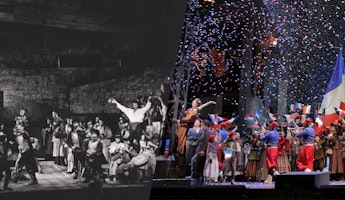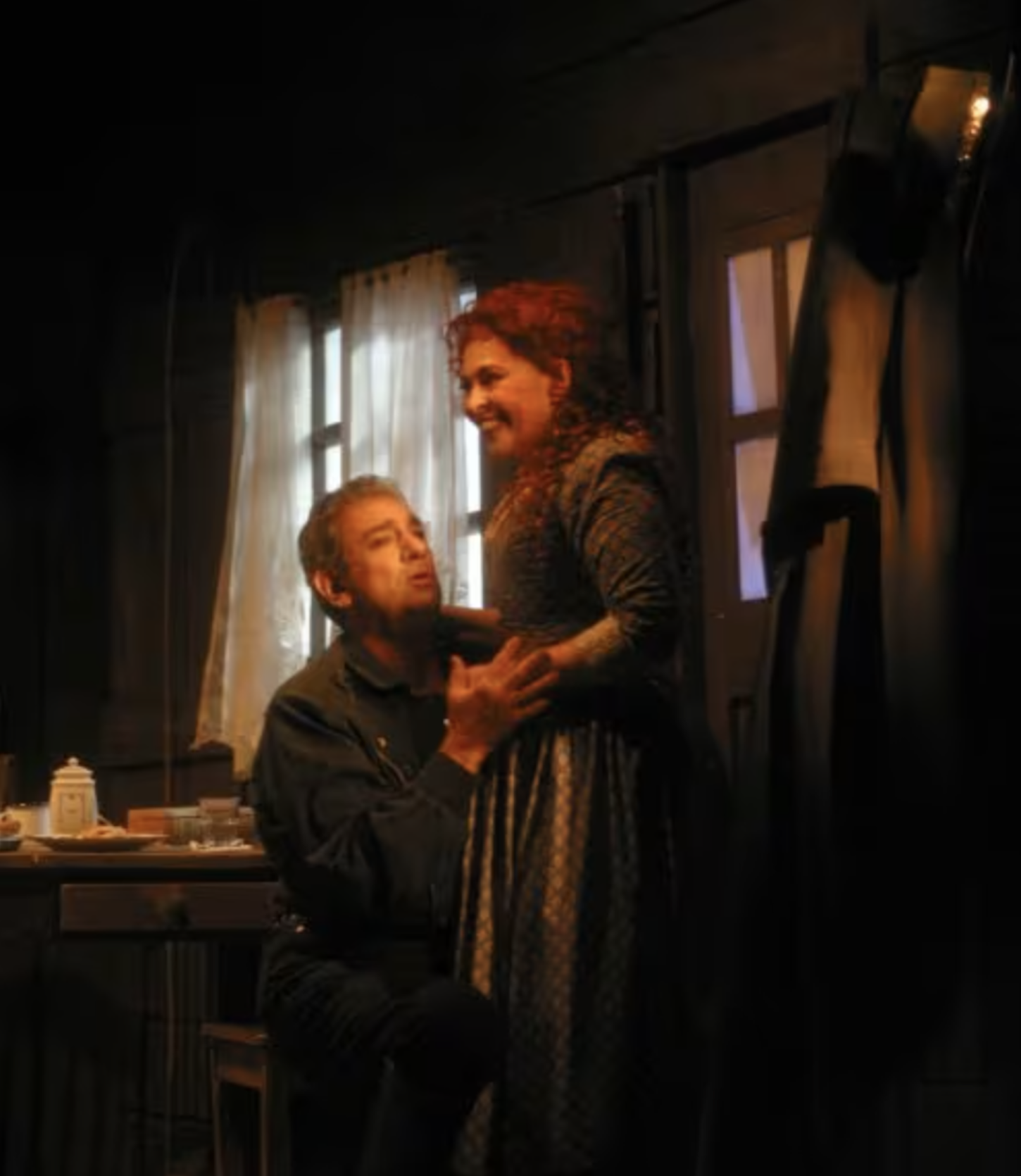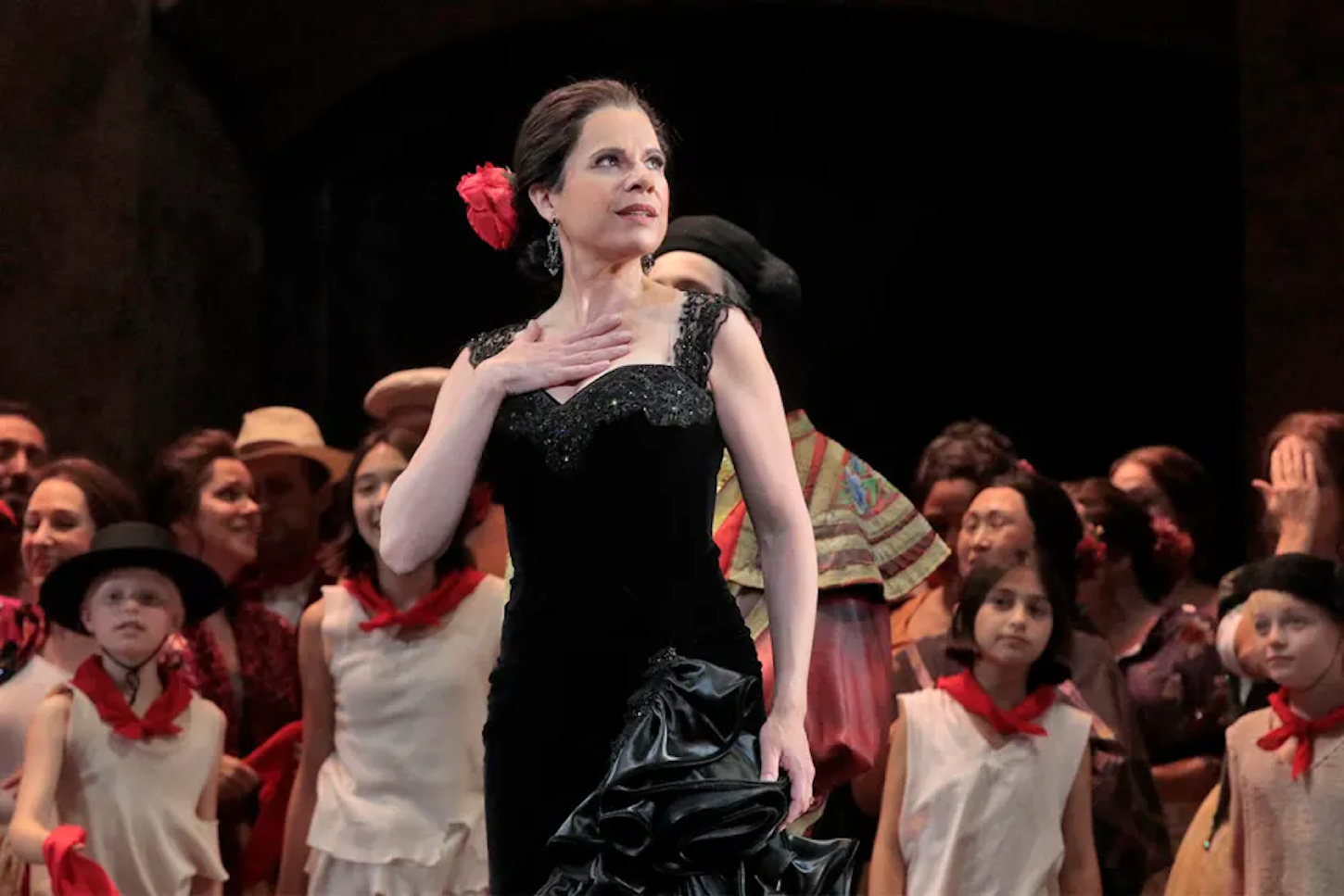Blog
July 6, 2016
Opera Heroines Not To Mess With
Opera is filled with stories of betrayal, murder, and love that push characters to emotional extremes. Heroines (and anti-heroines) are often the characters most caught up in the drama. They love passionately, sacrifice greatly, and kill relentlessly. We’ve created a list of ten multifaceted women, who aren’t afraid to lean in and stir the plot; they’re bold, brave and influential, even if it leads to their untimely death. See some of these fierce ladies at LA Opera this season and next season.
LADY MACBETH IN MACBETH
In Verdi’s Macbeth (based on the Shakespeare play), Lady Macbeth takes fierce to a whole new level. After learning of her husband’s victory in battle, she urges him to kill the king and take the crown. Macbeth does so, only to be filled with remorse. It is Lady Macbeth who completes the killing and frames two guards for the king’s murder. She wants power and social standing and will stop at nothing to achieve this. Verdi expands the role of “Lady M” in his opera, giving her character even more agency, and making her the epitome of an opera anti-heroine not to mess with. She might murder you, if you do!
BRÜNNHILDE IN DER RING DES NIBELUNGEN (THE RING CYCLE)
Is Brünnhilde the strongest women in the entire opera repertory? She is after all the central character in Richard Wagner’s monumental Ring Cycle, appearing in three of the four Ring operas. A complex and compelling woman with a fascinating character arc, she is defined by her bravery and intelligence. She grasps what is happening in the world with keener perception than her father (Wotan, king of the gods) or her husband (the mighty-but-unintellectual hero Siegfried) and she is unafraid to take action to do what she thinks is necessary. Like many other Wagner heroines, she makes the ultimate sacrifice for love, but Brünnhilde’s martyrdom has the greatest impact: hers redeems the entire world.
MINNIE IN LA FANCIULA DEL WEST
The Girl of the Golden West is a rarity among Puccini operas. Why? It ends happily, particularly for heroine Minnie. Unlike some other Puccini heroines, Minnie has true grit. She’s a gun-wielding saloon owner who always takes charge of her own destiny. She gives Bible lessons to the Gold Rush miners, but cheats at poker to save her boyfriend. Minnie ultimately rides off into the sunset with him, after rescuing him from the gallows. She’s a feminist, an entrepreneur, and the leading lady of her own life. Not too bad for a 19th-century cowgirl!
LEONORE IN FIDELIO
Leave it to Beethoven to create another opera heroine who saves the day. Leonore bravely goes undercover to rescue her husband, a political prisoner who has been locked away in a secret dungeon. She disguises herself as a male prison guard named Fidelio (hence the title of the opera) and plunges into her dangerous mission, fearlessly pulling a gun on the villain in the opera’s tensest moment. Leonore proves that a heroine can be just as brave – if not braver – than her hero.
TOSCA
In Puccini's Tosca, the title character - a fiery prima donna - is forced to play a role she never imagined when she becomes trapped between her allegiance to her rebel lover and the scheming of a treacherous police chief who will stop at nothing in his lust for her. The explosive conflict between these three unforgettable characters comes to a hair-raising conclusion that showcases just how far Tosca will go to save the man she loves.
CARMEN
Carmen is a feisty opera heroine, who proclaims that she is a woman who cannot be tamed (in of the most famous opera arias, “Habanera”). She marches to the beat of her own drum and though she is murdered by her former lover at the end of the opera, she does not go quietly, and he is presumably worse for the loss of her. Lesson? Don’t mess with Carmen. Her memory will haunt you forever.
ISABELLE EBERHARDT IN SONG FROM THE UPROAR
Missy Mazzoli’s Song from The Uproar is an opera based on the life and writings of Swiss adventurer Isabelle Eberhardt. Isabelle is a woman to be reckoned with both in the opera and in real life. At the age of 20, Isabelle left her life in Switzerland for a nomadic and unfettered existence in North Africa. From 1900 to 1904, she traveled extensively through the desert on horseback, relentlessly documenting her travels in detailed journals and short stories. In 1901, she fell in love with Slimene Ehnni, an Algerian soldier, and they began a chaotic relationship marked by dramatic fights and long separations. Isabelle defied conventions of her time; she dressed as a man, drank, smoked, and even joined a Sufi brotherhood that typically excluded women. Isabelle’s life belonged to no one but herself, making her not only an opera heroine not to be messed with, but also a powerful historical figure.
NORMA
Vincenzo Bellini’s Norma is arguably the ultimate girl power opera. Norma, the head of the Druids, discovers that her lover has been unfaithful to her. He has fallen in love with one of her handmaidens, Adalgisa. Does Norma turn on her handmaiden? No. She is too classy for that. In favor of sisterhood, she forgives Adalgisa, who then pledges her allegiance to Norma.
MUSETTA IN LA BOHÈME
Puccini’s La Bohéme is a tale of six impoverished young bohemians, surviving only on laughter and the promise of love. Musetta is arguably the feistiest of these characters. While she toys with loving Marcello, one of the other bohemians, she won’t let him tell her what to do, and she won’t have her life in someone else’s hands. Musetta is a career-gal, who seeks out her own future – a sharp contrast to the more timid, demure, and sickly Mimi.
ELEKTRA
In Richard’s Strauss’s Elektra, the title character is the complete opposite of a passive opera heroine. She seeks vengeance over her mother, Klytaemnestra, who murdered her father King Agamemnon. Along with her brother, Elektra schemes to kill her mother. She restores her father’s honor by getting revenge, even though it leads to her death.
SALOME
Elektra is not the only fierce female character in a Richard Strauss opera. The title character in his Salome (adapted from the Oscar Wilde play) is also a character not to be messed with. The Judean princess Salome becomes infatuated with John the Baptist, prisoner of her stepfather, King Herod. The prophet’s spiritual fervor inflames Salome’s inexplicable yearning and she is determined to have him. Salome is one of the most passionate, multifaceted characters in the opera repertory and can be brutal to achieve her heart’s desire.








/03-cosi/_dsc0996_pr.jpg?format=auto&fit=crop&w=345&h=200&auto=format)




















/opera-heroines.png?format=auto&fit=crop&w=1450&h=455h&auto=format)


